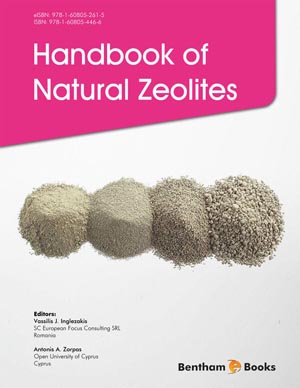Abstract
Zeoponic plant growth media is a media composed of enriched zeolite substrate containing some of the essential plant growth nutrients on their exchange sites. In addition to the exchangeable cations, the substrate usually contains minor amounts of other solid phase minerals supplying essential buffering ions and micronutrients. Various types of zeoponic systems have been developed so far. In these systems zeolite supplies K and NH4, apatite supplies Ca, P, Mg, S, Fe, Mn, Zn, Cu, B, Mo, Cl and other calcium bearing minerals such as calcite and dolomite provide supplementary Ca and Mg and there is little or no need to supply nutrient elements to this system. In fact, these systems act similar to the slow release fertilizers gradually providing the required essential elements for plant growth. So far, different kinds of zeoponic systems have been developed and National Aeronautics and Space Administration (NASA) researchers had a key role in developing and modifying these systems. The present chapter describes some properties, advantages and disadvantages of zeoponic systems.
Keywords: Zeoponic, growth media, substrate, fertilizers, soilless culture.












